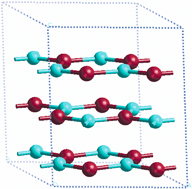Growth of ZnO thin films—experiment and theory
Abstract
Many recent studies of ZnO thin film growth have highlighted a propensity for forming c-axis aligned material, with the crystal morphology dominated by the polar {0001} surface. This is illustrated here for ZnO thin films grown by ![[1 with combining macron]](https://www.rsc.org/images/entities/char_0031_0304.gif) ), (10
), (10![[1 with combining macron]](https://www.rsc.org/images/entities/char_0031_0304.gif) 0) and (11
0) and (11![[2 with combining macron]](https://www.rsc.org/images/entities/char_0032_0304.gif) 0) surfaces. Thin (<18 layer) films which terminate with the polar (0001) and (000
0) surfaces. Thin (<18 layer) films which terminate with the polar (0001) and (000![[1 with combining macron]](https://www.rsc.org/images/entities/char_0031_0304.gif) ) surfaces are found to be higher in energy than corresponding films in which these polar surfaces flatten out forming a new ‘graphitic’-like structure in which the Zn and O atoms are coplanar and the dipole is removed. For thinner (<10 layer) slab sizes this coplanar surface is found to be lower in energy than the non-polar (10
) surfaces are found to be higher in energy than corresponding films in which these polar surfaces flatten out forming a new ‘graphitic’-like structure in which the Zn and O atoms are coplanar and the dipole is removed. For thinner (<10 layer) slab sizes this coplanar surface is found to be lower in energy than the non-polar (10![[1 with combining macron]](https://www.rsc.org/images/entities/char_0031_0304.gif) 0) and (11
0) and (11![[2 with combining macron]](https://www.rsc.org/images/entities/char_0032_0304.gif) 0) surfaces also. The transition between the lowest energy geometries as the ZnO film thickness increases is investigated, and possible consequences for the growth mechanism discussed.
0) surfaces also. The transition between the lowest energy geometries as the ZnO film thickness increases is investigated, and possible consequences for the growth mechanism discussed.


 Please wait while we load your content...
Please wait while we load your content...